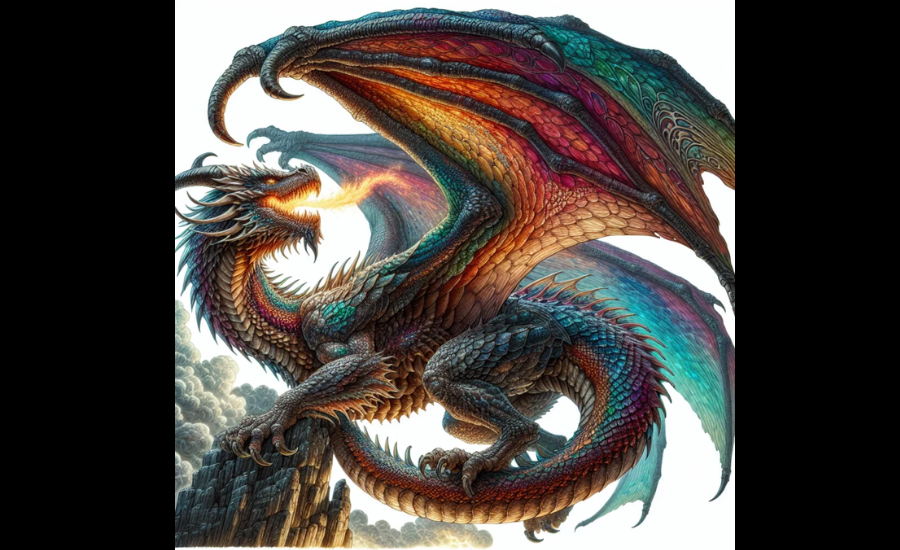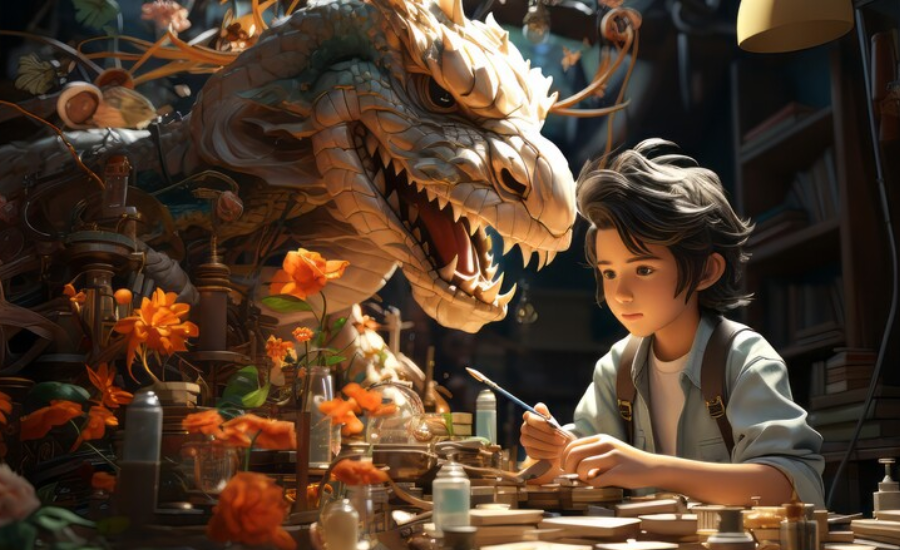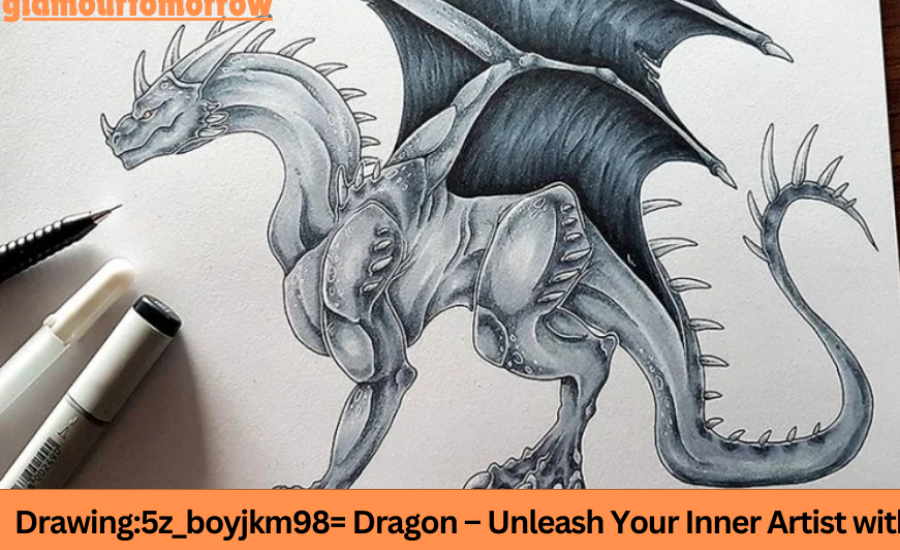drawing:5z_boyjkm98= dragonThis guide will walk you through the essential techniques, methods, and tips for crafting a remarkable dragon illustration. From understanding the fundamental anatomy of these legendary beasts to mastering the finer details, you’ll learn how to bring your dragon drawing to life. By focusing on proven strategies and practical advice, this resource is designed to help artists at all levels achieve a stunning result.
Understanding the Art of drawing:5z_boyjkm98= dragon

Fundamentals of Drawing Dragons
Before diving into the intricacies of dragon illustration, it’s essential to grasp the basic anatomy that will guide your drawing process. Although dragons are fantastical beings, they are often depicted with anatomical features inspired by real-world animals, including reptiles, birds, and mammals. This section will provide a comprehensive overview of the core elements—such as the head, body, wings, and tail—necessary for creating a well-structured dragon.
Head and Facial Features
The dragon’s head is a defining characteristic and can vary greatly depending on the dragon’s intended appearance. Whether you envision a dragon with a menacing, fierce expression or a more sage-like, ancient visage, the head’s shape and features are crucial. This part of the guide will help you navigate different dragon head styles, focusing on key elements like the eyes, nostrils, teeth, and horns to create a compelling and distinctive look.
Wing Anatomy and Structure
Dragon wings are often modeled after bat wings, featuring a membrane stretched over a complex skeletal framework. Understanding the underlying bone structure and joints is vital for drawing wings that appear both realistic and dynamic. This section will detail the anatomy of dragon wings, offering tips and techniques for making them look powerful and expressive.
Designing the Tail
The tail of a dragon can range from simple and sleek to intricate and ornamental, depending on your artistic vision. Not only does the tail contribute to the dragon’s balance, but it can also be depicted as a formidable weapon. This guide will explore various tail designs, from graceful and serpentine to rugged and armored, providing insights on how to incorporate this element into your dragon illustration effectively.
Step-by-Step Instructions for Drawing a Dragon
1. Creating the Initial Sketch
Begin your dragon drawing by establishing a basic sketch using simple shapes such as circles, ovals, and triangles. This foundational outline helps to set the proportions and pose of the dragon, ensuring that each part of the creature is proportionally accurate and well-aligned. This preliminary stage is essential for laying out the overall structure and composition of your dragon.
2. Refining the Dragon’s Head
With the basic outline in place, shift your focus to the dragon’s head. Refine its shape and add crucial features such as the eyes, nostrils, and mouth. The expression you choose here will greatly influence the dragon’s character and mood. This step also involves detailing elements like horns, scales, and other distinguishing features to give the head a more dynamic and engaging appearance.
3. Developing the Body and Limbs
Next, concentrate on the dragon’s body and limbs. The body should convey strength and muscularity, with lines that suggest power and movement. Depending on your dragon’s design, it may have two or four legs. This part of the guide will help you draw the body and limbs with precision, ensuring they are consistent with the overall design and style of your dragon.
4. Crafting the Wings
Once the body is detailed, turn your attention to the wings. Start by sketching the underlying skeletal structure lightly, then progressively add the wing membranes. Wings can be complex to draw, so take your time to ensure they are proportionate and look natural. This section will offer advice on creating realistic wings, considering various poses and angles.
5. Detailing the Tail
Conclude your drawing by focusing on the tail. The tail’s design can vary from slender and whip-like to robust and armored, depending on your artistic vision. Add any final details such as spikes or fins to complete the dragon’s look. This final touch will enhance the overall appearance and coherence of your dragon illustration.
Enhancing Depth and Texture

Shading is a crucial aspect of bringing your dragon illustration to life, adding a sense of depth and dimension that makes the creature appear three-dimensional. This section will explore various shading methods, including hatching, cross-hatching, and blending. By mastering these techniques, you can create a more realistic and visually engaging dragon.
Texturing Dragon Scales
The texture of dragon scales significantly contributes to the overall detail and authenticity of your drawing. Depending on your dragon’s design, scales can vary from smooth and polished to rough and irregular. This part of the guide will provide insights into different approaches for drawing and shading scales, ensuring that your dragon’s skin has a genuine, lifelike appearance.
Applying Highlights and Contrasts
Incorporating highlights and contrasts can dramatically enhance your dragon drawing, making it stand out with added visual impact. This section will demonstrate how to strategically place highlights to emphasize the dragon’s features and how to use contrast effectively to create a dynamic interplay between light and shadow, giving your dragon a striking and dramatic effect.
Helpful Tips and Techniques for Drawing Dragons
The tools you choose can greatly influence the quality of your dragon illustration. This section will guide you through selecting the ideal pencils, erasers, and paper types for your artwork. Additionally, we’ll explore the benefits of using digital tools, such as drawing tablets and software, which can offer enhanced precision and flexibility in your creative process.
Using Reference Images for Improved Accuracy
Incorporating reference images into your practice can enhance your drawing skills and provide valuable insights for creating various dragon designs. This section will offer strategies for finding and utilizing reference images effectively, helping you achieve greater accuracy and detail in your dragon drawings.
Exploring Various Artistic Styles

Dragons can be illustrated in a wide range of styles, from realistic to whimsical. This section will encourage you to experiment with different artistic approaches to discover which style resonates most with you. Whether you lean towards traditional techniques or more contemporary, abstract methods, exploring diverse styles will help ignite your creativity and refine your unique artistic voice.
Final Words
Dragons have long fascinated artists with their majestic and enigmatic qualities, offering a unique canvas for creativity. This guide provides essential techniques for drawing dragons, from understanding their anatomy to refining details. Start by creating a basic sketch with simple shapes to set proportions and pose. Focus on detailing the head, body, limbs, wings, and tail to bring your dragon to life. Enhance your drawing with shading, texturing scales, and applying highlights to add depth and realism. Experiment with various tools, both traditional and digital, and use reference images to improve accuracy. Embrace different artistic styles to find what best expresses your vision. With these strategies, you’ll be well on your way to creating a stunning dragon illustration.
FAQs
1. What are the best tools for drawing a dragon?
- For traditional drawing, high-quality pencils, erasers, and textured paper are essential. For digital art, drawing tablets and software like Adobe Photoshop or Procreate offer precision and flexibility.
2. How do I start sketching a dragon?
- Begin with a basic sketch using simple shapes such as circles and ovals to establish the dragon’s proportions and pose. This rough outline will serve as the foundation for refining details and adding depth to your drawing.
3. What should I focus on when drawing the dragon’s head?
- Pay attention to the head’s shape and features like the eyes, nostrils, and mouth. The expression you choose will set the tone for the dragon’s character. Include details such as horns and scales to enhance its distinctive look.
4. How can I make dragon wings look realistic?
- Start by sketching the wing’s skeletal structure lightly. Gradually add the membrane and details, ensuring the wings are proportionate and dynamic. Study bat wings for inspiration, as they often serve as a model for dragon wings.
5. What techniques can I use to add depth to my dragon drawing?
- Use shading techniques such as hatching, cross-hatching, and blending to create a sense of depth. These methods will help your dragon appear more three-dimensional and lifelike.
6. How do I texture dragon scales effectively?
- Vary the texture of scales from smooth to rough based on your dragon’s design. Use detailed shading and line work to capture the scale’s surface and make the dragon’s skin appear authentic.
7. What role do highlights and contrasts play in dragon illustrations?
- Highlights and contrasts enhance the visual impact of your drawing. Properly placed highlights can accentuate features, while contrasts between light and shadow create a dynamic and striking effect.
8. How can reference images improve my dragon drawing?
- Reference images help you understand anatomy, texture, and details. Use them to guide your drawing process and ensure accuracy in proportions and features. They can also inspire different poses and styles.
9. Should I experiment with different artistic styles?
- Absolutely! Experimenting with various styles, from realistic to whimsical, helps you discover what best expresses your vision. Exploring different approaches can also enhance your creativity and artistic skills.
10. How often should I practice drawing dragons?
- Regular practice is key to improving your skills. Set aside time to draw dragons frequently, and don’t be afraid to revisit and refine your techniques.
Stay in the loop for upcoming updates and alerts! Alevemente




